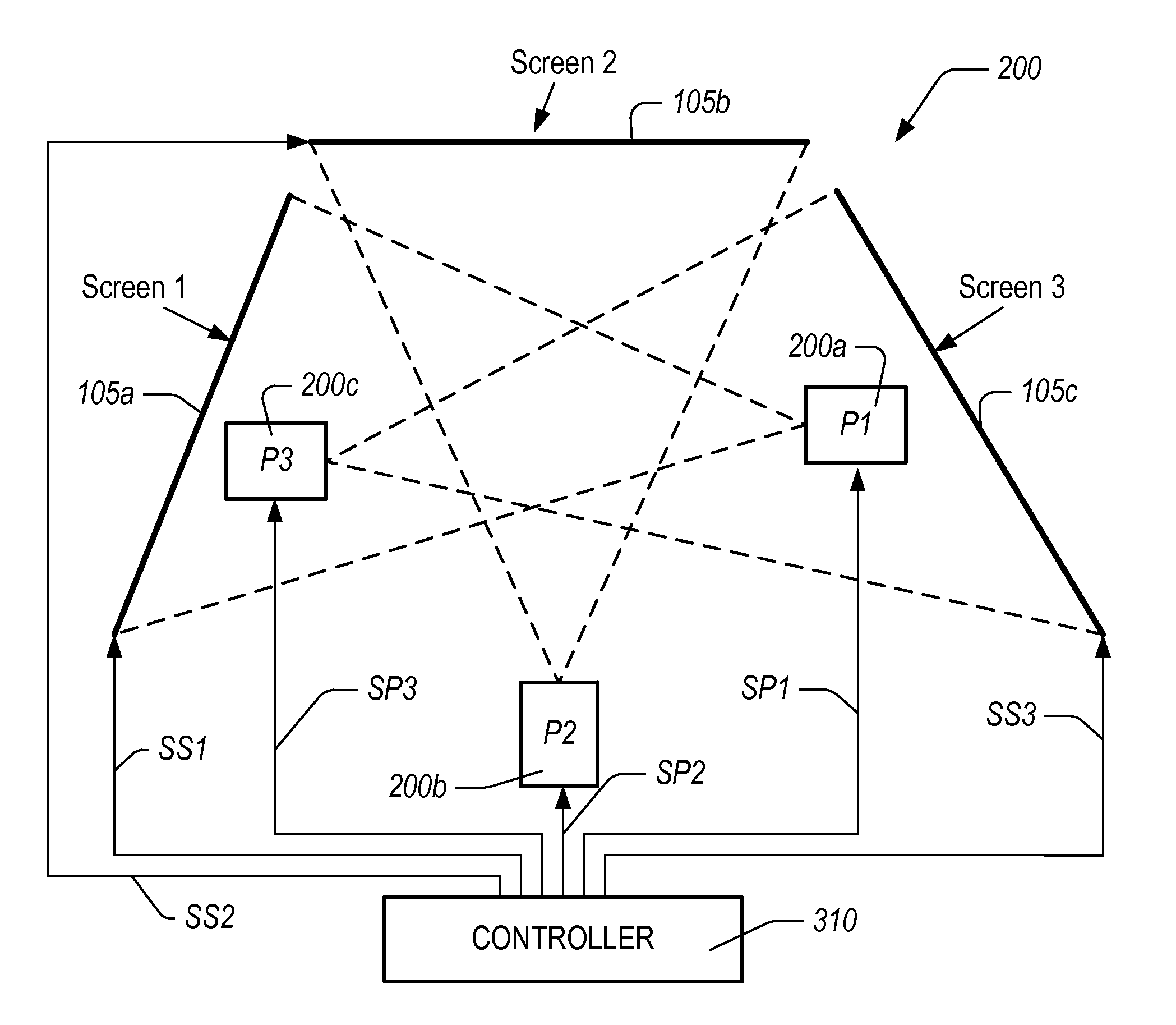Display systems and methods employing time multiplexing of projection screens and projectors
- Summary
- Abstract
- Description
- Claims
- Application Information
AI Technical Summary
Benefits of technology
Problems solved by technology
Method used
Image
Examples
example screens
with Multi-Layer Structure
[0084]FIG. 7A illustrates an example screen 700 having a multi-layer structure, wherein the screen 700 is a front projection screen in the scattering state. The screen includes multiple layers including an anti-reflection element or glare-suppression element 701, transparent substrates 702, 704 with a transparent conductive layer on the inner side, a PDLC layer 703 in the diffuse reflective state (e.g., because no electric field is applied to the PDLC layer 703), a light absorbing element 705, an optional support substrate 706, and an optional adhesive layer 707. Ray 1 represents incident light which is strongly scattered by the PDLC layer 703 due at least in part to no electric field being applied and the nematic droplets of the PDLC layer 703 strongly scattering the incident light.
[0085]The PDLC layer 703 includes an electrically controllable PDLC film. The PDLC film can have a thickness of, for example and without limitation, 10 μm and can be sandwiched ...
PUM
| Property | Measurement | Unit |
|---|---|---|
| Time | aaaaa | aaaaa |
| Length | aaaaa | aaaaa |
| Frequency | aaaaa | aaaaa |
Abstract
Description
Claims
Application Information
 Login to View More
Login to View More - R&D
- Intellectual Property
- Life Sciences
- Materials
- Tech Scout
- Unparalleled Data Quality
- Higher Quality Content
- 60% Fewer Hallucinations
Browse by: Latest US Patents, China's latest patents, Technical Efficacy Thesaurus, Application Domain, Technology Topic, Popular Technical Reports.
© 2025 PatSnap. All rights reserved.Legal|Privacy policy|Modern Slavery Act Transparency Statement|Sitemap|About US| Contact US: help@patsnap.com



